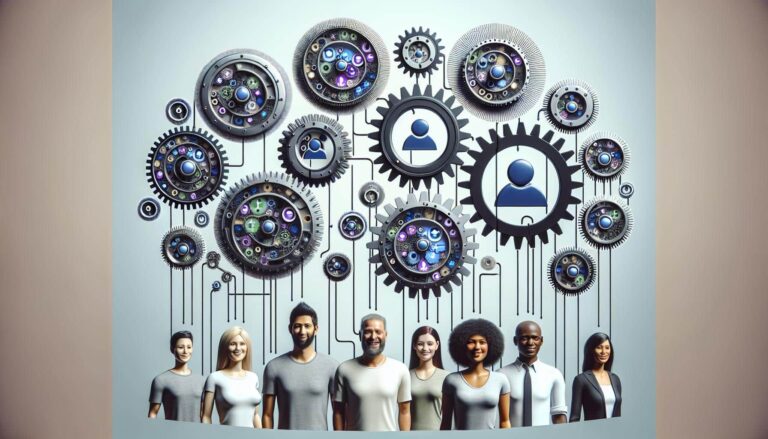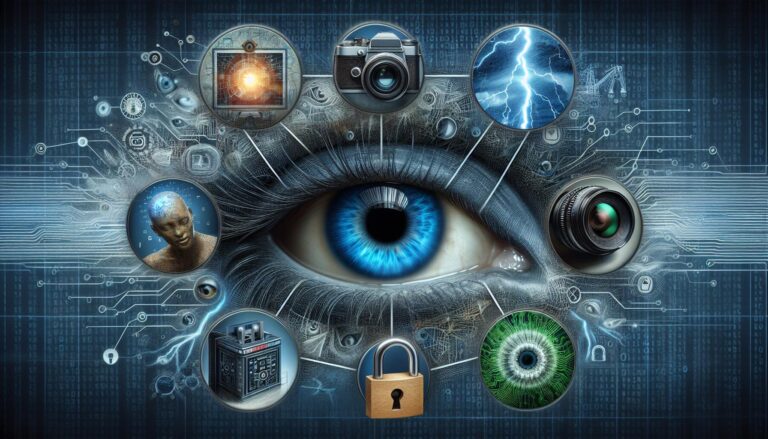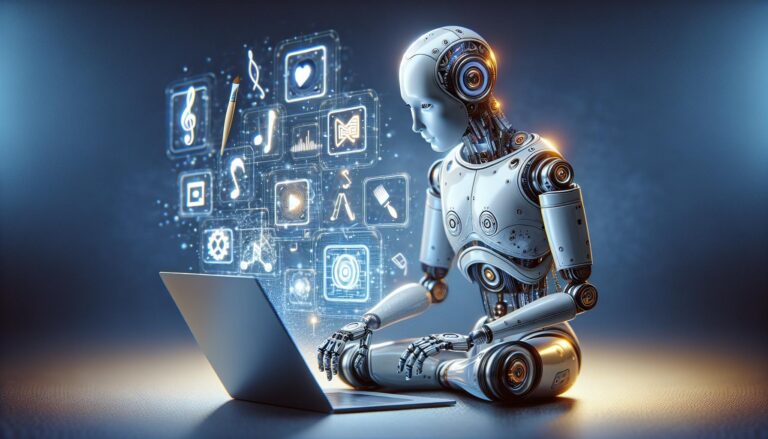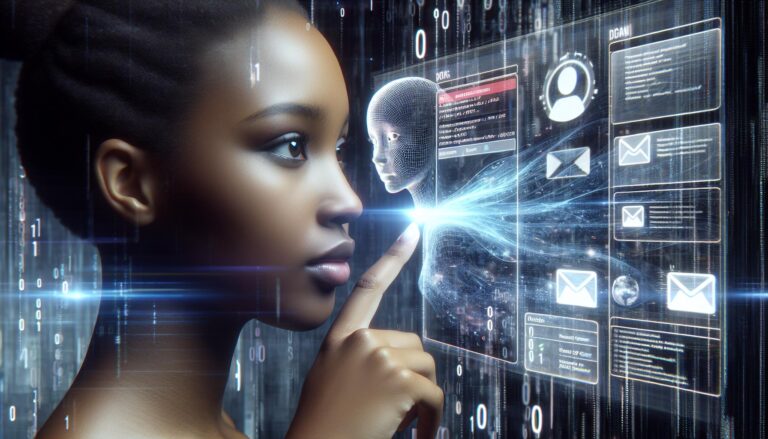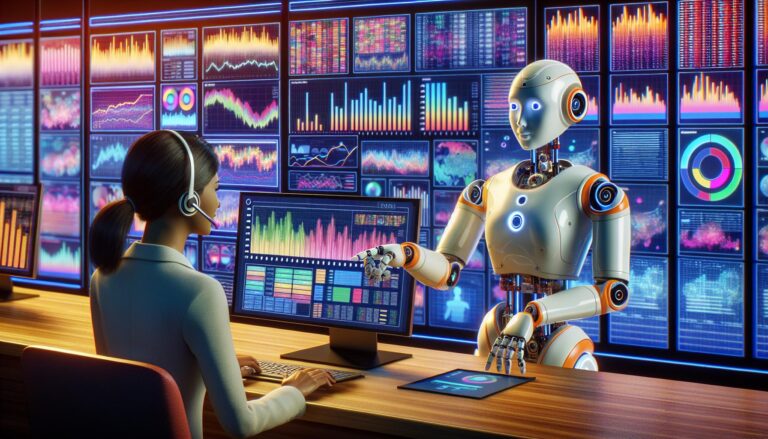Unlocking the Future: Can ChatGPT be Detected and How?
In the world of artificial intelligence, one question that’s been making rounds is, “Can ChatGPT be detected?” Considering the rapidly advancing AI technology we’re experiencing today, it’s a valid query. With AI-driven chatbots like ChatGPT becoming increasingly sophisticated, it’s becoming harder to distinguish them from human interactions.
ChatGPT, developed by OpenAI, has been designed to mimic human-like text responses. It’s so good at its job that it’s often hard to tell if you’re chatting with a bot or a human. But is there a way to detect it? That’s what we’ll explore in this article.
PowerBrain AI Chat App powered by ChatGPT & GPT-4
Download iOS: AI Chat Powered by ChatGPT
Download Android: AI Chat Powered by ChatGPT
Read more on our post about ChatGPT Apps & AI Chat
Key Takeaways
- ChatGPT, an advanced AI chatbot, has a capacity for human-like text responses, making it challenging to distinguish from human interactions.
- ChatGPT evolves through constant interaction and learning, becoming more sophisticated with time. It uses an architecture called Transformers that helps it analyze and learn from vast datasets.
- There are ongoing initiatives to develop robust detection systems that can identify AI-generated text, aiming to strike a balance between AI advancement and human interaction.
- Challenges in detecting ChatGPT include its advanced algorithms, constant learning and evolving capacity, as well as the lack of standards in this relatively new AI landscape.
- Several methods could potentially help detect ChatGPT, including behavioral analysis, linguistic inquiry, machine learning-based detection, and the ‘honeypot’ technique.
- The implications of effective AI detection are significant, ensuring integrity in digital interactions and fairness to users despite potential obstacles like privacy intrusion, limited resources, and the constant evolution of AI models.
- Future platforms could potentially have inherent detection measures that constantly update to ensure authentic user interaction, thus maintaining the human element in an increasingly digitized world.
Exploring ChatGPT
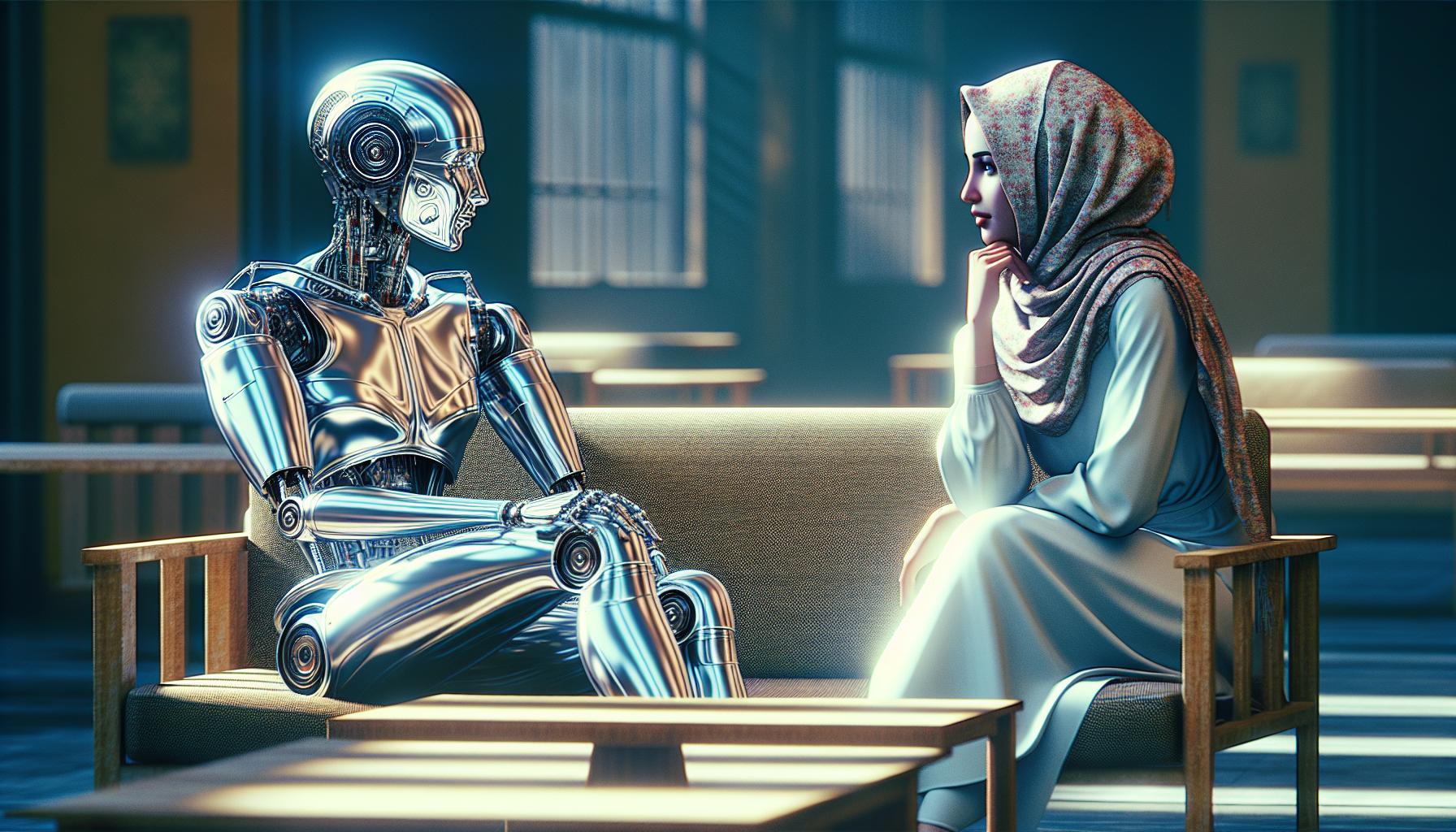
As we delve deeper into the intricacies of ChatGPT, it’s important to bear in mind that this AI-driven chatbot isn’t only advanced — it’s evolving. Through machine learning and continuous refinement, it’s getting closer to human-like responses with each interaction.
One significant characteristic of ChatGPT is its fine-tuned model of language called Transformers. It uses this architecture to analyze and learn from the vast dataset it’s exposed to. By understanding grammar, syntax, and context, it becomes better at producing coherent sentences that are indistinguishable from human-written text.
Let’s not forget that the more it communicates, the more it learns. Find an intriguing piece of information. ChatGPT is designed to handle such queries elegantly. It takes every conversation as a signal, learning and improving from it.
This intricate system might make you wonder, “Can we still detect ChatGPT?” As the lines blur between AI and human responses, it’s proving to be a tough nut to crack.
Read more
prompt hacking ChatGPT
ChatGPT Art
xhat GPT
ChatGPT no login
Connect ChatGPT to the internet
ChatGPT no restrictions
Don’t get me wrong — there is hope. Several researchers and teams worldwide are working to build robust detection systems. They’re looking into every facet of ChatGPT, from its training mechanism to how it generates responses. They aim to devise a foolproof method to identify AI-generated text by understanding its structure and patterns.
As we focus on these detection mechanisms, we must remember that it’s not just about identifying AI chatbots. We’re also aiming to foster a healthy balance between AI advancement and human interaction. It’s a tricky balance, but one we need to strike diligently.
So, in the grand scheme, where does ChatGPT fit? As an AI development, its capabilities are fascinating and alarming. It’s driving transformation in how we perceive technology, pushing us to redefine what it means to interact online.
Nevertheless, as we strive to unravel the conundrum of detecting ChatGPT, we’re indeed treading on uncharted territories. Only time will tell just how far we can venture in this unexplored AI landscape.
Understanding ChatGPT Technology

In our quest to uncover whether ChatGPT can actually be detected, let’s delve into the workings of this revolutionary AI chatbot. ChatGPT molds its language abilities using a transformative model aptly called Transformers. It’s not something out of a sci-fi movie but an advanced algorithm that deconstructs and comprehends language patterns.
But, you might ask, how exactly does it work? Here’s an attempt at simplification. Firstly, ChatGPT doesn’t just dive in blind. Before any conversation, it’s primed with a mix of licensed data, data created by human trainers, and publicly available data. Then, it steps into the unknown, learning from each interaction and refining its understanding of human dialogue.
One key aspect that sets ChatGPT apart is its iterative refinement approach. The trainers employed by OpenAI play both sides of a conversation, utilizing model-written suggestions to give a more natural flow to the dialogue. They then review and correct the model, further adding to its comprehension.
Transformers, though, are the core of ChatGPT. The chatbot feeds on data, with each interaction adding to its bulging data bank. Transformers analyze this data, understanding the context and nuances of language to refine the bot’s conversational skills. These algorithms are smart. They can spot patterns and even deduce what words should come next in a sentence.
However, let’s address the AI elephant in the room. There’s a risk, a concern that these chatbots could become too human-like, blurring the lines between AI and human interaction. It’s an intriguing debate and one that researchers worldwide are grappling with. They’re studying the structure, behavior, and patterns of ChatGPT, trying to find that middle ground that balances AI advancement with the need for human authenticity in our online world. Regardless, the uncharted territory of AI development continues to demand our exploration. Notice how this exploration ties back to our main question: Can ChatGPT be detected? We’ll dive deeper into this in the following sections.
Challenges in Detecting ChatGPT

Navigating the complex maze of artificial intelligence is no easy task, and detecting the utility of a system like ChatGPT has its unique hurdles. There are distinct challenges that are critical to understand when discussing why it’s difficult to detect ChatGPT.
A pivotal challenge concerns the intelligence of this model. ChatGPT is driven by advanced algorithms, making it highly eloquent and capable of nuanced conversations. My deep dives into the inner workings of this model reveal that it comprehends language patterns using Transformers. This AI sophistication blurs the line between human and machine, making detection all the more difficult.
Another hurdle is the capacity for learning that ChatGPT possesses. It doesn’t stay stagnant – it learns continuously from interactions. It’s primed with data before conversations, teaming with nuanced phrases and intricate language patterns. This complex learning process makes it challenging to ascertain whether we’re interacting with an AI or a real human.
Finally, the challenge of detection intensifies due to the lack of norms and protocols in this evolving AI landscape. The concept of identifying chatbots is still relatively ambiguous. Standards have yet to be established to aid in distinguishing between human-elevated interactions and those driven by AI.
Hence, to discuss the detection of ChatGPT, we must first acknowledge and tackle these hurdles head-on. The path ahead involves ongoing research and continuous discussion, delving into concerns about maintaining human authenticity online while advancing AI technology. This is an imperative part of the journey in carving out the future of AI development.
Methods to Detect ChatGPT
It’s crucial to understand the ways and means through which ChatGPT can be detected. To tackle the issue head-on, we ought to get to grips with technological tools and methods—one of them being Behavioral Analysis.
Behavioral analysis is a technique used extensively in cyber-security. It involves studying patterns and outliers within the generated textual data. While this may seem simple at first, it’s not a walk in the park when applied to ChatGPT. Still, a detailed behavioral analysis can reveal certain repetitive patterns or responses found in AI-generated text, distinct from a human’s unpredictable variability.
Another interesting method could be applying the concept of Linguistic Inquiry. Essentially deep diving into the linguistics—the use of certain words, phrases, and sentence structures can give away that the text has been machine-generated. Again, this relies on highlighting the unnatural flow or excessive use of factual correctness that a human conversationalist might not adhere to.
Skeptics might argue that these methods also come with their own set of challenges. It might be difficult to actually establish what qualifies as ‘normal’ and what does not. An over-reliance on a certain set of conversational data can skew the process. However, it’s undeniable that these represent a step towards formulating effective detection tools.
Is there potential in using Machine Learning to detect ChatGPT? It could be fruitful to train an algorithm to identify certain giveaways of AI-generated text. This bears a resemblance to the process that ChatGPT itself undertakes to improve and learn.
Let’s consider a unique approach – the ‘Honeypot’ technique. This strategy involves setting up a trap or ‘honeypot’ to attract ChatGPT into making a predictable response. Humans inherently have a variety of reactions and a capacity for independent thought and are less likely to take the bait.
Here’s a snapshot of the top methods under consideration:
| Method | Brief Description |
|---|---|
| Behavioral Analysis | Studying patterns and outliers within the generated textual data |
| Linguistic Inquiry | Examining the use of words, phrases, and sentence structures |
| Machine Learning | Training an algorithm to identify AI-generated text |
| ‘Honeypot’ technique | A trap to elicit predictable AI responses |
While the struggle with detection continues, it grants us the opportunity to appreciate the level of sophistication AI, like ChatGPT, possesses.
Implications and Future of Detecting ChatGPT
As these detection methods come to light, we’re faced with new implications and challenges, but there’s potential, too. A promising future lies ahead, as I believe we’re only scratching the surface of AI detection.
It’s essential to recognize the significance of distinguishing AI-generated responses. It upholds the integrity of digital interactions and safeguards accessibility, ensuring a fair playing field for all users. Thus, leveling the digital field calls for steadfast norms and policies focusing on behavioral analysis and linguistic inquiry.
However, there are potential obstacles to consider:
- Privacy intrusion
- Limited resources
- Constant upgrades and evolution of AI models
These challenges don’t deter the quest; they shift the focus to significant aspects like Machine Learning.
If utilized wisely, Machine Learning could revolutionize detection. Programming systems to self-learn and adapt. It’s not just about recognizing AI responses but their evolutions as well. Machine Learning could bridge that gap, promoting responsiveness to AI advancements.
The ‘Honeypot’ technique, capturing attackers by feigning vulnerability, could also bring about noteworthy gains in the fight against AI subversion.
Here’s where it gets interesting: imagine future digital platforms inherently equipped with these detection measures. These would be self-regulating systems, perpetually updating their algorithms to ensure authentic user interaction, never falling prey to AI interference.
The road to effective AI detection is yet to be fully unraveled, and it’s not without its hurdles. But the potential these methods exhibit makes it a pursuit worth undertaking. This pursuit fuels the continuous innovation in detection technologies as we strive to maintain the human element in an increasingly digitized world.
AI-powered models like ChatGPT continue to advance, leading the race. However, our attention shouldn’t be boding over the challenge it presents. Instead, it should focus on embracing its evolution while ensuring the upstanding use of such technology.
Conclusion
It’s clear that detecting ChatGPT isn’t just a tech challenge; it’s a necessity for preserving digital integrity. While hurdles like privacy intrusion and resource limitations exist, machine learning gives us hope. The ‘Honeypot’ technique and the idea of self-regulating platforms are exciting possibilities. We’re on a journey to balance the evolution of AI models like ChatGPT with responsible use. As we navigate this path, let’s remember that the goal isn’t to eliminate AI interactions but to ensure they’re authentic and fair. The future of AI detection looks promising, and I’m confident we’ll see significant strides in this field. Let’s embrace AI’s evolution, as it’s not just about innovation but also about maintaining the authenticity of our digitized world.
Frequently Asked Questions
What is the main topic of the article?
The article primarily discusses the significance and future of detecting AI-generated responses, particularly from ChatGPT, in order to protect digital integrity and promote fair online interactions.
Why is distinguishing AI-generated responses important?
Recognizing AI-generated responses is crucial for maintaining digital integrity and fairness. It also helps ensure genuine user interactions in an increasingly digital world.
What are some challenges in detecting AI-generated responses?
Some challenges include privacy concerns, resource limitations, and the constant evolution of AI models, making detection increasingly complex.
How might Machine Learning revolutionize detection methods?
Machine Learning has the potential to be a game-changer in identifying AI-generated responses by continuously learning and adapting to evolving AI models and detection strategies.
What is the ‘Honeypot’ technique?
The ‘Honeypot’ technique is a promising strategy discussed in the article for detecting AI-generated responses, though further details aren’t provided in the summary.
What role do self-regulating digital platforms play?
Self-regulating digital platforms equipped with detection measures can help manage and control AI-generated responses, contributing to a safer digital environment.
Why is the pursuit of effective AI detection deemed crucial?
Effective AI detection is vital for technological innovation and ensuring authentic user interactions. It’s also important in promoting the responsible use of AI technologies like ChatGPT.

